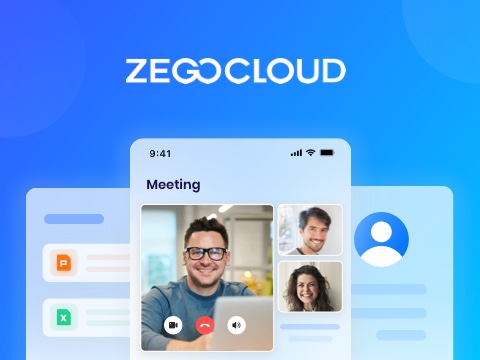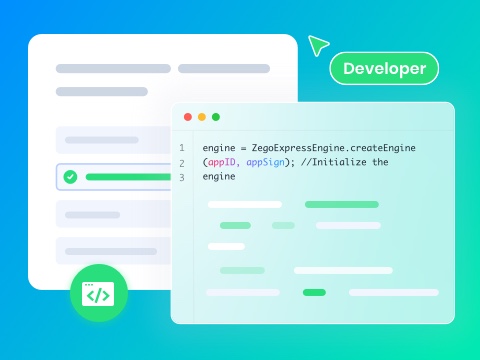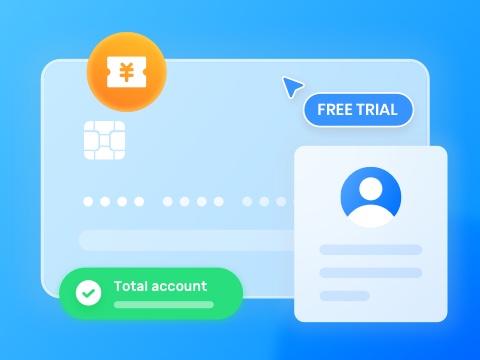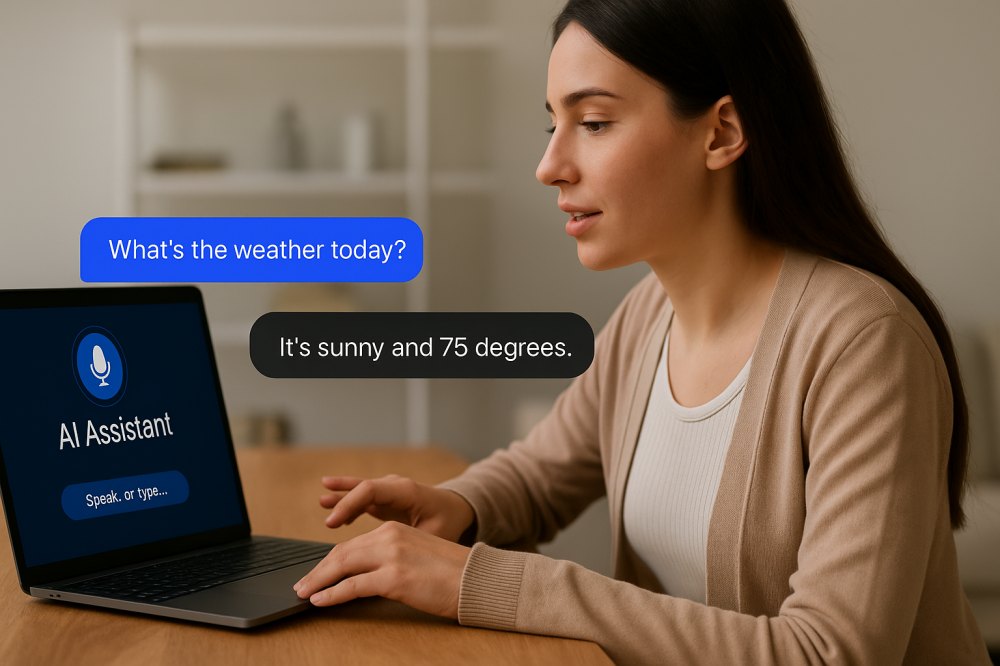As technology is evolving rapidly, AI assistant has become the backbone of productivity, decision-making, and accessibility. No matter how advanced AI assistants are in managing business workflows, many people still see them as simple voice bots. Therefore, this article highlights what they actually are, the types that exist, and what future they hold, so you can leverage their potential rather than be left behind.
What is an AI Assistant?
An AI assistant is a software program driven by Artificial Intelligence, particularly by technologies like Natural Language Processing (NLP) and Machine Learning (ML). It is aimed to learn human language (written or spoken), to assist you with work and activities. In addition, it can look into information repositories, reveal pertinent data, create messages, control schedules, schedule reminders, etc.
Tasks, historically performed by a human personal assistant, have been assigned to such AI personal assistants, including reading text messages/emails and looking up phone numbers. Notably, they leverage NLP to analyze voice/text inputs, involving intent, contexts, grammar, and nuances. Afterward, the algorithms spin up a response with vast internal and web databases. In the case of voice input, AI utilizes voice recognition technology and converts speech to text while responding.
Types of AI Assistants
With core tech NLP and machine learning, there are many types of AI assistant apps and programs; some of which are mentioned ahead:
1. Virtual Personal Assistants (VPAs)
One of the well-known types of AI assistants includes VPA, which are considered voice-activated aids such as Siri, Google Assistant, and Alexa. Most of them come built into smartphones, smart speakers, and certain smart home devices. Moreover, such AI-powered voice assistants can respond to voice commands, set reminders, offer weather insights, play music, and control smart home gadgets.
2. Text-Based Chatbots & Conversational Agents
Secondly, the in-app bots or natural language conversational agents embedded within can deal with customer support, frequently asked questions, and other friendly relationships. As an example, ChatGPT, Replika, and Zendesk are chatbots that can act as friends or romantic partners and answer complicated customer requests. However, note that some conversational agents are basic, while others are trained in large language models for contextual and sentiment-aware dialogues.
3. Enterprise/Business Agents
Not everyone is aware of this AI assistant type that comes integrated into platforms like Teams, Slack, Zoom, and Salesforce. Therefore, observe that they are internal workflows and are used to automate HR requests, IT support, report generation, analytics, and scheduling. Finally, these assistants relieve employees of routine actions, increase productivity, and allow businesses to concentrate on strategic projects.
4. Conversational/Mental Health Assistants
These AI virtual assistants are enabled to promote well-being based on dialogue and affect emotional state and mindsets, all according to ethical standards. Compared to the standard chatbots, they answer complicated questions, trigger empathetic feelings, and make the chat seem human and natural. Anyhow, the popular ones include immersive interactive programs like Soul Machine and chat-based games like Mitsuku.
5. Specialized/Task-Specific Assistants
Finally, they are built considering the needs of a certain domain like writing, coding, finance, healthcare, and legal. Here, for AI writing assistants, there are Grammarly and Lindy, while Otter.ai and Fireflies are transcription assistants for speech-to-text conversion. Additionally, Mint and Cleo are finance assistants, whereas Babylon and Ada are the best medical assistants for system checking and patient support.
AI Agents vs AI Assistants
Many people confuse AI agents with AI assistants that represent distant advancements in AI. Therefore, below is a comprehensive distinction in tabular format for educators, business, and policymakers, helping them prepare for automation’s evolving role:
| Feature | AI Agents | AI Assistants |
|---|---|---|
| Definition | Autonomous systems that perceive, decide, and take actions for certain goals | Software tools that respond to user commands/queries for task assistance |
| Autonomy | High (take actions without user prompts) | Low (requires user commands to act) |
| Examples | OpenAI Operator, AutoGPT, & other Shopping bots | Siri, Alexa, Grammarly, ChatGPT, & Google Assistant |
| Decision-Making | Environment perception & goal-oriented planning | Limited (use predefined or LLM-based instructions) |
| Learning | Adapt according to feedback | Learn from user preferences, but for personalization |
| Interfaces | API-driven, multi-model, and less user-facing | User-facing via chat and voice interfaces |
| Use Cases | Research delegations and automated purchasing | Customer support, AI personal assistant, writing help |
| Complexity | Higher (include planning, mapping, and real-time adjustments) | Lower (structured around direct user queries) |
| Proactivity | Proactively execute tasks and plans | Primarily reactive and responds to instructions |
| Capabilities | Navigate websites, manage calendars, and place orders | Answer questions, set reminders, and draft messages |
Top 10 AI Personal Assistants
According to 42% executives, administrative tasks are their biggest productivity blockers, and they want to delegate those tasks with minimal expenses. Hence, this section covers the 10 best AI assistants and their core features out of dozens of AI personal assistants, helping you make an informed choice:
1. Google Assistant

Developed by Google, this AI voice assistant software for Android devices can perform tasks like adjusting hardware settings and answering questions. Besides, it is integrated into Google Home and wearable devices, with the ability to handle call screening, smart home control, and personalized updates. Using conversational AI, it offers multi-turn dialogue handling and proactive suggestions, managing daily routines seamlessly across devices.
Key Features
- Users can set contextual and location-based reminders.
- Facilitates call screening with spam filtering options.
- This AI virtual assistant provides real-time translation in over 100 languages.
2. Motion
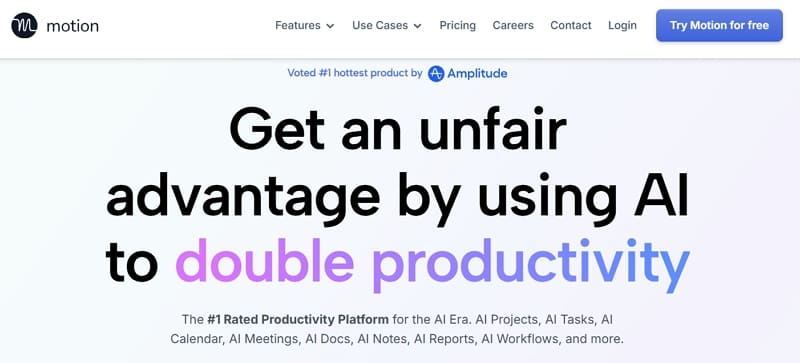
This AI-powered calendar and task manager has been designed for enterprise personal assistance and individuals seeking to optimize productivity. Notably, it analyzes work patterns with AI support and detects users’ availability to auto-plan days with minimal input. In addition, Motion blocks time for deep work and dynamically adjusts based on meeting changes or other priority shifts.
Key Features
- Offers an AI document assistant to summarize content and draft documents.
- With its AI workflow builder, users can obtain auto-scheduled projects from scattered data.
- Integrate this free AI assistant into Gmail, Zoom, Google Calendar, and Teams.
3. Apple Siri
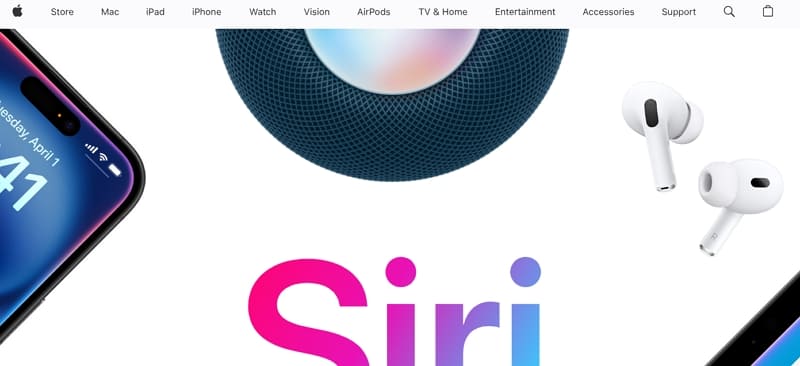
From setting a Pizza timer to playing upbeat music, Apple’s Siri has been enabling hands-free control over devices, being a native AI-powered voice assistant. With Apple Neural Engine, it ensures your audio input never leaves the device unless you choose to share it. Besides, Siri Personal learns from your preferences and routines for tailored suggestions.
Key Features
- Send messages, set reminders, play music, and control HomeKit-enabled smart devices.
- Integrate Siri with Shortcuts and automate repeated actions.
- The latest iOS 26 update brings ChatGPT integration in Siri for more natural responses.
4. Amazon Alexa
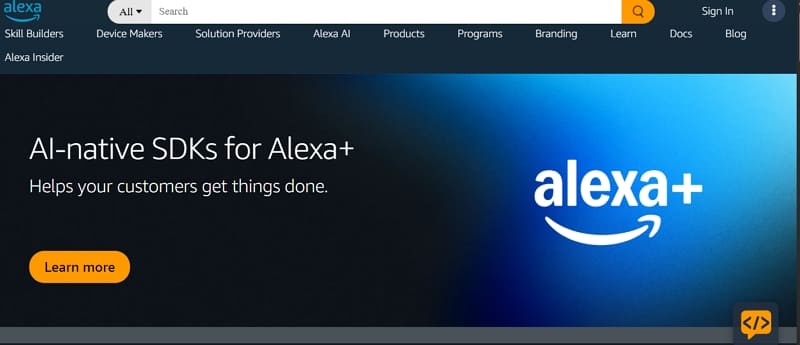
Despite Siri, Amazon Alexa is another powerful and versatile voice assistant that comes embedded in Echo devices and countless Smart Home products. Originally launched in 2014, Alexa can now play music, read aloud news updates, set reminders, and broadcast weather reports via voice inputs. Notably, with Skills, Alexa extends its functionality to mediation guides, games, and productivity tools for enhancing convenience.
Key Features
- Provides Alexa voice services that can create smart devices with simple integrations.
- Automate reordering of batteries, coffees, and filters using Amazon Dash Replenishment.
- Through integrating Alexa into Arlo (a smart camera), you can access video feeds by voice.
5. Samsung Bixby

With the aim of letting you focus on what matters, this AI assistant app is for Samsung smartphones, tablets, and smart appliances. Designed for device control and contextual assistance, it allows voice commands to perform actions like sending texts and interacting with compatible devices. Moreover, you can integrate it with the Samsung ecosystem that ultimately supports Bixby routines.
Key Features
- The Bixby Vision utilizes cameras for product search and real-time translation.
- By Bizby Quick command, it carries out multiple tasks in a certain order upon hearing.
- For color-blind blinds, its vision search can detect and read out colors in real-time.
6. Microsoft Copilot
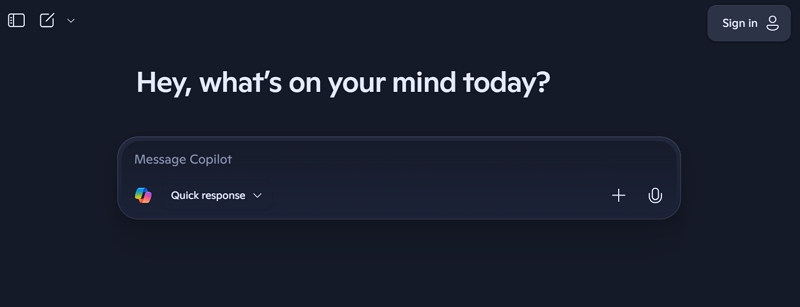
When Microsoft shifts its focus towards enterprise productivity, it brings Copilot and ignores Cortana, which was a personal digital assistant in 2014. Now, Copilot is an advanced AI personal assistant that comes integrated into Microsoft 365 and Windows 11/12. Powered by GPT-4 Turbo, it can draft emails in Outlook, summarize Teams meetings, generate Excel formulas, and create PPT slides.
Key Features
- Leveraging organizational data, it securely delivers context-aware assistance.
- The “Copilot in Windows” can assist with settings and summarize web pages.
- When embedded in Microsoft Graph, it delivers actionable insights using your files and interactions.
7. Fyxer.ai
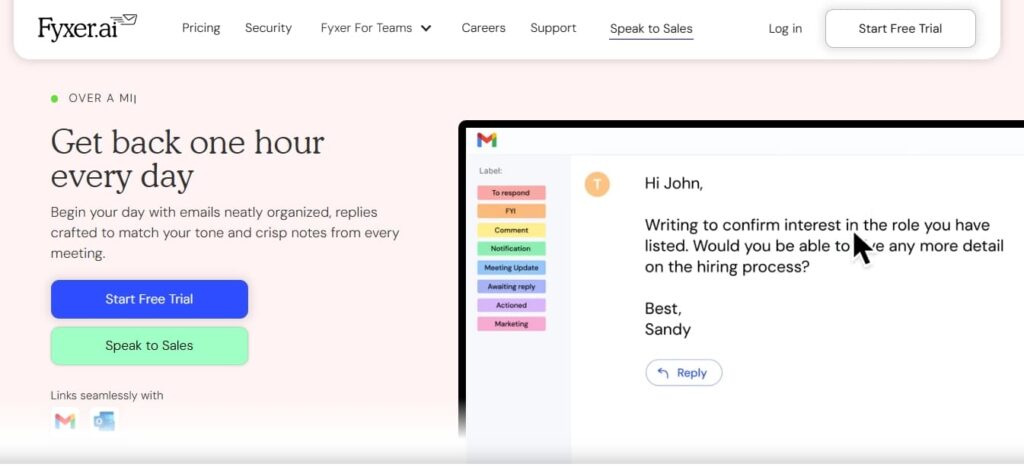
In the list, Fyxer is another best AI assistant that combines human expertise with AI tools for managing operational and administrative tasks. For busy professionals, it can help with inbox management, travel booking, and project coordination. Furthermore, it can work inside Gmail or Outlook for sorting emails, drafting responses, and taking notes during meetings with proactive learning capacities.
Key Features
- Enterprise users can avail themselves of its team analytics & Bespoke security control features.
- Craft replies to emails in your tone and crisp, showing AI and human hybrid task handling.
- By learning from the company’s documents and team members, it improves email quality and speed.
8. Reclaim.ai
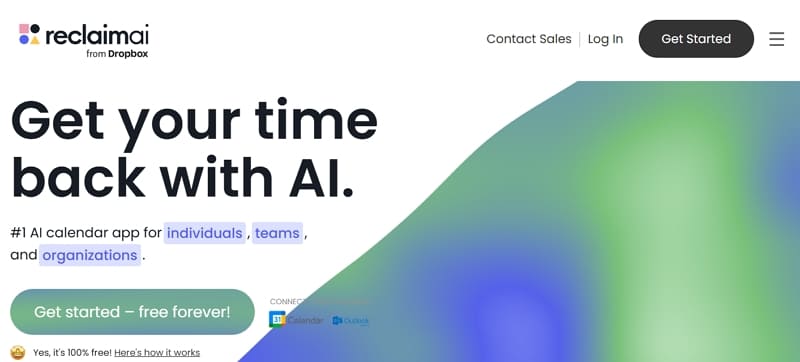
AI assistants are not limited to digital voice helpers; instead, AI calendar assistants like Reclaim.ai are also included in the list. This is because it automatically schedules time for routines, tasks, and personal affairs, while having the capacity to adapt to meeting changes. In addition, it syncs with Google Calendar to adjust priorities and prevent overscheduling through an intelligent Focus Time defense.
Key Features
- Integrate with task managers like Asana to create a link between the task list and the actual calendar.
- With AI calendar controls, it protects users from burnout by preventing back-to-back meeting days.
- Build a custom habit template and no-meeting days for your entire team.
9. Rewind
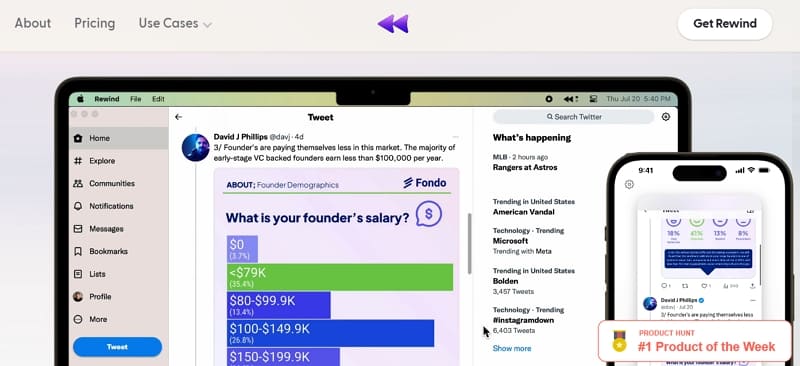
Moving towards the end, Rewind is an AI-powered personal memory and meeting assistant that captures your computer while working. By recording the screen’s audio, video, and everything you search, it lets users revisit their conversations and code sessions with exact playback. Besides, it compresses, transcribes, encrypts, and stores your data locally for privacy and contextual search across digital activities.
Key Features
- Being an AI personal assistant, it can summarize meetings and draft an email on requests.
- Since it leverages GPT-4, users can ask for details on their day.
- Works without cloud services like Dropbox and Gmail integrations.
10. Clara

Lastly, Clara is another AI-based email organization and appointment scheduling assistant tool that assists organizations and individuals to maximize productivity. This AI assistant app has natural language processing to read, interpret, and reply to emails in a human-like way. Nevertheless, it can operate logistics scheduling uninterrupted without even making the recipients aware that they are engaging with AI.
Key Features
- Integrates with your calendar and email systems to handle follow-ups, reminders, and time-zone differences.
- Sustains a polite or professional tone that aligns with your communication style.
- For critical enterprise environments, it also ensures data privacy and security.
How to Build a Real-Time AI Assistant with ZEGOCLOUD
To build voice-enabled AI assistants, developers usually rely on ZEGOCLOUD’s AI Agent framework. Remarkably, in comparison with ordinary chatbots, it combines the power of LLM intelligence with the possibility of high-quality audio streaming, where users can talk and get answers in real-time. Besides, the AI Agent SDK promotes low voice call latency, as low as 300-500ms, echo cancellation, and voice noise suppression so that the conversation is human-like.
Additionally, for interaction between AI agents and users, ZEGOCLOUD supports text, voice, and even digital human calls. Developers can even empower users to tailor the persona, timbre, and appearance of AI agents for AI customer service or companionship scenarios. Additionally, they can customize voice cloning with RAG and LoRa-based memory support.
The rich multimodal AI agent also enables photorealistic avatars with lip-sync in 200ms, transforming AI assistance from voice to visuals. Despite that, developers can embed the agent with fewer than 10 lines of code, enabling faster product testing. ZEGOCLOUD also has AI audio processing capabilities, especially AI VAD, which identifies human voices and filters out soft voice inputs.
The Future of AI Assistant
The new AI personal assistants’ wave is evolving from productivity tools to autonomous, invisible, and cognitive buddies. Based on some reports, 75% of the developed countries’ households could have at least 1 AI personal assistant by 2026. Besides, another research study states a $1 trillion increase in global productivity by 2030, all with just anticipatory AI adoption.
Then, another forum reveals that personal assistants will have a compulsory emotional AI feature within a decade. Moreover, NLP and ML innovations will continue to revamp their capacities to detect stress and frustration signs among users. To avoid misuse, the Electronic Frontier Foundation tends to declare clear guidelines on data usage during AI assistant development.
Furthermore, future AI assistants will contain invisible infrastructure that will understand what you need, along with precise timing. Despite that, they tend to bring Zero-Friction and Zero-Prompt Systems. It means there will be no human initiation for routine tasks, and AI will analyze contextual variables to act on your behalf.
Conclusion
In short, AI assistants have been a need of the era for busy professionals and teams alike, automating workflow. This article discussed the top 10 AI assistant options available online, along with their key features.
Moreover, types of AI assistants, future trends, and a comparison were drawn to keep you aware of the basics. Now, if you are ready to build your own, consult the ZEGOCLOUD AI Agent framework for a quick and feature-rich personal assistant.
FAQ
Q1: What is meant by an AI assistant?
An AI assistant is a software program that uses artificial intelligence to understand natural language and perform tasks such as answering questions, managing schedules, generating content, or assisting in communication. It helps automate daily activities and improve efficiency for individuals and businesses.
Q2: What is the most popular AI assistant?
Some of the most popular AI assistants today include ChatGPT by OpenAI, Google Assistant, Apple’s Siri, Amazon Alexa, and Microsoft Copilot. Each focuses on different user needs, from general conversation to productivity and device control.
Q3: Which AI is better than ChatGPT?
While ChatGPT remains one of the most advanced AI assistants, alternatives like Google Gemini, Anthropic’s Claude, and DeepSeek have also gained attention for their reasoning and multimodal capabilities. The best choice depends on your specific use case, such as creativity, coding, or real-time collaboration.
Q4: Is ChatGPT the best AI assistant right now?
ChatGPT is widely regarded as one of the leading AI assistants because of its advanced natural language understanding and versatility. However, other AI platforms continue to evolve, offering unique advantages in specific applications like data analysis, voice interaction, or business automation.
Let’s Build APP Together
Start building with real-time video, voice & chat SDK for apps today!



